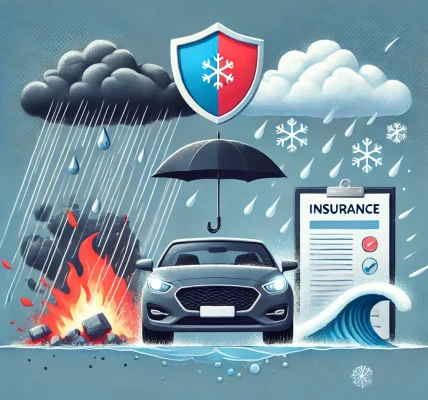Introduction
Buying or selling a used car involves several legal and financial considerations, one of the most important being the transfer of car insurance. Whether you are the buyer or the seller, ensuring that the insurance policy is correctly transferred is crucial for avoiding legal complications and maintaining financial protection. This guide will walk you through the steps required to transfer car insurance safely and efficiently.
Why Car Insurance Transfer is Important
1. Legal Compliance
- In many regions, driving without a valid insurance policy is illegal. If a vehicle’s insurance is not transferred, the new owner could be held legally accountable for driving an uninsured car.
2. Avoid Financial Liabilities
- If an accident occurs after selling a car but the insurance remains under the previous owner’s name, the seller may still be held liable.
3. Seamless Claim Process
- The buyer will have no issues filing claims if the insurance is properly transferred. If the policy remains under the previous owner’s name, the new owner may face difficulties in getting coverage.
Steps to Transfer Car Insurance When Selling a Used Car
Step 1: Inform the Insurance Provider
- As the seller, notify your insurance company about the sale of your car. This is necessary to cancel or transfer your policy.
- Provide documents such as the car’s registration certificate (RC) and proof of sale.
Step 2: Obtain the No Objection Certificate (NOC)
- If the car is financed, get a NOC from the lender to ensure the insurance transfer is valid.
- This step is required if the insurance provider needs confirmation that no dues are pending.
Step 3: Handover Necessary Documents to the Buyer
- Documents required for insurance transfer:
- Original Insurance Policy
- Registration Certificate (RC) copy
- No Objection Certificate (NOC) from the previous insurer
- Sale Agreement or Invoice
- Identity Proof of the Buyer
Step 4: Ensure a Smooth Handover
- It is advisable to submit a formal letter to the insurance company mentioning the change of ownership.
- Request an acknowledgment from the insurance provider for records.
Steps to Transfer Car Insurance When Buying a Used Car
Step 1: Verify the Existing Insurance Policy
- Before making a purchase, check whether the seller’s insurance is still valid and if it covers third-party liabilities.
- Ensure that the policy is not lapsed; otherwise, you may have to buy a new one immediately.
Step 2: Request Ownership Transfer from the Insurance Provider
- Provide documents such as the Registration Certificate (RC), proof of identity, and sale agreement.
- The insurance provider will process the transfer after verifying these documents.
Step 3: Pay the Transfer Fees & Endorse the Policy
- A nominal fee may be charged by the insurer to process the ownership change.
- Ensure that the endorsement (modification of details) is done in the policy document.
Step 4: Check Coverage and Upgrade if Needed
- Once the policy is transferred, review the coverage and determine if additional protection, such as comprehensive coverage, is required.
Important Points to Consider During Insurance Transfer
- Policy Transfer Time Limit: Most insurance providers require the transfer to be completed within 14 to 30 days of purchase.
- Claim Benefits: The buyer should check if the No Claim Bonus (NCB) can be transferred. If not, they may need to negotiate a discount with the seller.
- Validity of Insurance: Ensure that the insurance policy has not expired before proceeding with the transfer.
What Happens if Insurance is Not Transferred?
- The seller may be held responsible for any legal liabilities if an accident occurs before the transfer is completed.
- The buyer will have difficulty filing claims, as the policy will still be under the previous owner’s name.
- The vehicle may be considered uninsured, leading to penalties, fines, or even legal action.
Conclusion
Transferring car insurance is a critical step when selling or buying a used vehicle. It ensures legal compliance, protects against financial risks, and allows for a seamless claims process. Both the seller and the buyer should take the necessary steps to complete the insurance transfer as soon as possible to avoid complications. If there are any doubts, consulting with the insurance provider can help clarify any concerns and ensure a smooth transaction.
By following the steps outlined in this guide, you can transfer car insurance without any legal or financial risks, making the car ownership transition a hassle-free experience.



